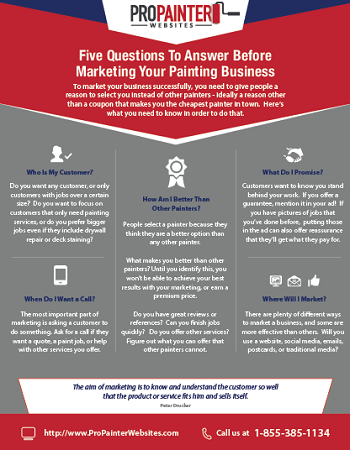Key Seasonal Considerations For Commercial Outside Paint: What You Required To Be Enlightened About
Key Seasonal Considerations For Commercial Outside Paint: What You Required To Be Enlightened About
Blog Article
Content Writer-Leach Celik
When you're intending a commercial external paint task, seasonal variables can make or break your outcomes. You'll wish to think about just how temperature level and moisture effect paint application and drying times. Selecting the ideal season can guarantee your paint adheres properly and lasts longer. But which seasons are really the very best for this kind of work? Allow's discover the crucial elements that can impact your job's success.
The Effect of Temperature Level on Paint Application
When you're intending a commercial external paint project, the temperature level can substantially influence exactly how well the paint adheres and dries.
Ideally, you want to paint when temperature levels vary in between 50 ° F and 85 ° F. If it's too cold, the paint may not cure appropriately, leading to concerns like peeling or cracking.
On the flip side, if it's also hot, the paint can dry also rapidly, avoiding appropriate adhesion and causing an irregular finish.
You should additionally think about the moment of day; morning or late afternoon uses cooler temperatures, which can be extra beneficial.
Constantly inspect straitline painting for the details paint you're using, as they commonly supply assistance on the optimal temperature level array for optimum outcomes.
Humidity and Its Impact on Drying Times
Temperature isn't the only environmental element that affects your commercial outside paint task; moisture plays a significant function also. High humidity levels can reduce drying out times significantly, influencing the general high quality of your paint job.
When the air is filled with dampness, the paint takes longer to heal, which can cause problems like poor attachment and a greater threat of mold development. If you're painting on a particularly humid day, be prepared for prolonged delay times between layers.
It's critical to monitor local climate condition and plan accordingly. Ideally, aim for moisture levels between 40% and 70% for ideal drying out.
Maintaining these consider mind ensures your project stays on track and supplies a long lasting coating.
Best Seasons for Commercial Exterior Paint Projects
What's the very best season for your business external painting tasks?
Spring and very early autumn are usually your best options. During these periods, temperatures are mild, and humidity levels are commonly lower, creating optimal problems for paint application and drying out.
Prevent summer season's intense heat, which can create paint to completely dry too swiftly, resulting in bad attachment and finish. Similarly, wintertime's cold temperature levels can hinder appropriate drying out and curing, risking the durability of your paint work.
Go for https://www.express.co.uk/life-style/property/1624363/Interior-design-tips-paint-colours-white-rule-to-follow-room-direction-compass-Coat-Paints with temperatures in between 50 ° F and 85 ° F for optimal results. Remember to check the regional weather forecast for rainfall, as damp conditions can destroy your project.
Planning around these variables ensures your painting project runs smoothly and lasts longer.
Final thought
To conclude, preparing your commercial exterior paint jobs around seasonal factors to consider can make a considerable difference in the end result. By scheduling job throughout the ideal temperature levels and moisture degrees, you'll ensure better adhesion and drying out times. Keep in click for info to keep an eye on regional weather forecasts and pick the correct time of year-- spring and very early loss are your best options. Taking these steps will certainly aid you attain a long lasting and expert coating that lasts.
